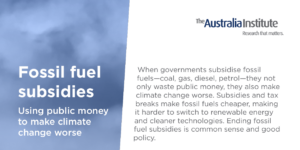AGL is charging ordinary consumers more than 3 times for gas than it charges businesses
Analysis of AGL’s annual report reveals that AGL charge households 3 times for its gas than it does to businesses.
Today a news report suggests that gas supplier AusNet wants to charge residential customers an average of $76 per year more until mid-2028 because fewer customers are using gas. While that is outrageous enough, an examination of the pricing of AGL shows that residential customers are already paying more for gas than they should.
Since the middle of 2021 when inflation began to rise, Australian households have been struggling to make ends meet as the cost of necessities has risen faster than that of items they can choose to go without. One of the biggest price rises over this time has been gas.
Since June 2021, overall CPI has risen 16.8% for an average annual increase of 5.6%. While this is significant in itself, given gas prices rose nearly double that at 30.7% for an annual average price rise of 10.2%, it is clear that households dependent upon gas for their heating have done it particularly tough.
Consumers however might think that this is just the unfortunate side effect of the cost of international gas prices rising and as a result, energy companies like AGL have no choice but to pass on the cost to continue to make a profit. This however is not the case. Analysis of AGL’s annual report for 2023-24 reveals what makes up the price of electricity it charges both households and businesses. The numbers show that AGL sees households as the profit cows, while businesses pay 69% less per Gigajoules of gas than do consumers.
According to AGL’s own figures, it charged ordinary consumers more than 3 times it did to businesses (38.1/GJ compared with 11.9/GJ).
Why is that the case? Profit. AGL’s profit on consumer customers is 36% of the sales price at the retail level. Importantly, this does not include the profit AGL makes on wholesale gas sales.
That profit essentially comes from just billing and marketing to you. The gas households get is the same gas as businesses do. Businesses don’t get some special type of gas which means gas companies can’t make a profit on it. It’s the same gas but AGL actually makes a small loss on sales to businesses, while more than a third of the price you are paying for gas is just profit. These figures also exclude the profits made on the distribution and transmission networks.
Clearly when 36% of the price of gas charged to households is AGL’s profit the cause of inflation is not extra demand but companies being able to charge higher prices to keep their profit margins fat.

Even more galling for consumers will be the news that while they are being charged such high prices, according to the ATO tax transparency figures, in 2020-21 (the latest published year) AGL earned $15.4bn in income, and yet paid no tax.
No tax, and yet households are paying more. Hardly fair, and hardly consistent with a just transition to a net zero economy.
Related research
Between the Lines Newsletter
The biggest stories and the best analysis from the team at the Australia Institute, delivered to your inbox every fortnight.
You might also like
Fossil fuel subsidies
When governments subsidise fossil fuels—coal, gas, diesel, petrol—they not only waste public money, they also make climate change worse. Subsidies and tax breaks make fossil fuels cheaper, making it harder to switch to renewable energy and cleaner technologies. Ending fossil fuel subsidies is common sense and good policy.
I’ll admit it. Dutton is spot on about one thing when it comes to gas
It’s not often I agree with Peter Dutton, but I can admit when he’s right and he’s right about two things.
Why a fossil fuel-free COP could put Australia’s bid over the edge
When the medical world hosts a conference on quitting smoking, they don’t invite Phillip Morris, or British American Tobacco along to help “be part of the solution”.



